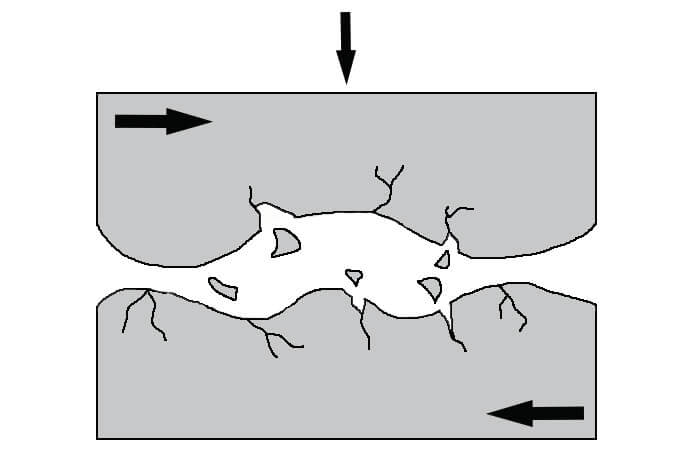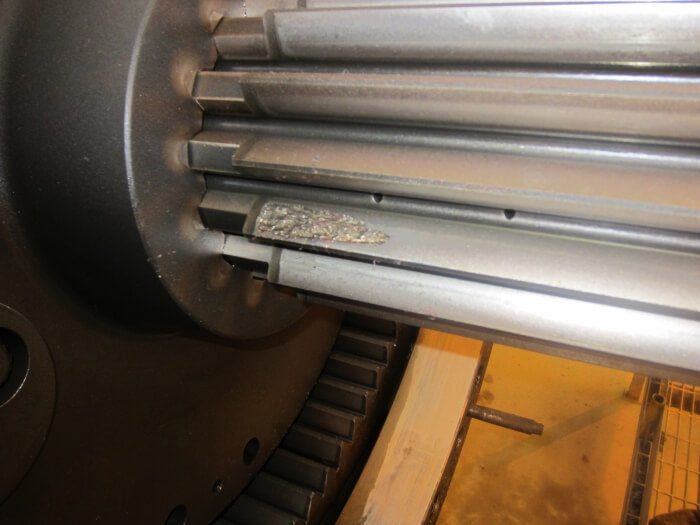


What is abrasive wear?
Abrasive wear is also referred to as abrasion. In this process, one friction partner acts on another and, due to its surface unevenness, generates abrasion or material breakout on the counterpart. In this way, the smallest roughness peaks found on rotating components penetrate the edge layers of the mostly softer friction partner and produce chipping or scoring.
If external particles get between the friction partners and these scrape along the surfaces, they can also cause abrasive wear.
Another form of wear is adhesive wear.

Causes of abrasive wear
Abrasive wear occurs mainly at machine starts or heavy loads. Under these conditions, the rough surfaces can come into direct contact with the softer component as the lack of speed reduces separation. Once the machine is running at full speed, the viscosity of the lubricant protects the machine parts by separating them.
Another common cause of this type of wear is the use of a lubricant of a too low viscosity, as the friction partners cannot be completely separated from each other then. To prevent abrasive wear, anti-wear additives are added to the oil to protect the surfaces during boundary lubrication conditions.
If hard particles move between two surfaces, this can also lead to material chipping. These microscopic particles are about the same size as the lubricant film, so they can scrape through the small gap between the lubricating components. The particles can enter the machine externally through an opening or via contaminated lubricant.

Prevention of abrasive wear
The design of the machine, or the choice of materials for the friction partners, can minimise abrasive wear in advance. For example, pairings of metal with ceramics or plastics are less susceptible prone to abrasion than two metal surfaces lying on top of each other.
In order to reduce abrasion by external particles, it is recommended to use a lubricant that reliably removes contamination from the lubrication point, or to filter the system well. In addition, the oil change intervals should be adhered to in order to keep the contamination of the lubricant at a minimum. When a new machine is put to operation, it should be flushed to remove all contaminants. Also, close all hatches and open connections on the machine.
There are also several methods to determine if your machine is affected by abrasive wear. A visual inspection of the machine parts should be the first step. However, sometimes the human eye cannot detect the microscopic damage. The more common method of checking for abrasive wear is to carry out an oil analysis. This type of analysis reliably looks for typical wear elements to detect possible damage in time.
Contact
